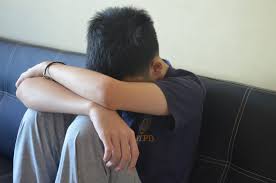
Why Does That Child Behave so Poorly?
Last week, I attended a seminar entitled “They Need to Know That You Care, Before They Care What You Know!” The focus was on the impact of trauma on children.
What is trauma? According to childwelfare.gov, trauma is an emotional response to an intense event that threatens or causes harm. The hurt can be physical or emotional, real or perceived, and it can threaten the child or someone close to him or her. Trauma can result from a single event or from exposure to multiple events over time.
Research reveals children who grow up in poverty, when shown upsetting images, display increased activity in the brain’s amygdala (involved in anxiety, fear, and emotional disorder) and decreased activity in the pre-frontal cortex (which helps limit the influence of the amygdala and allows long-term decision-making to prevail over impulse).
The seminar speaker shared some disturbing statistics concerning the trauma epidemic in our country.
1 in 4 school children have experienced a traumatic event
1 in 4 witnessed a violent act
1 in 10 saw one family member assault another
1.5 million children are growing up with a parent addicted to drugs or alcohol
Approximately 1,600 children in America will die this year – 78.3% at the hands of their parents
Many studies confirm that 50% of parents studied do not know how their children are doing in school, who their friends are or where they are after school
1 in 5 American children live in poverty—more than 13 million go to bed hungry every night
More than 50% spend some of their childhood separated from a parent

Do these findings disturb you the way they do me? Is your child, or one you love, a victim of trauma?
Some signs to look for include avoidance of trauma-related thoughts or feelings, intrusive memories of the event or nightmares about the event, hyperarousal or exaggerated startle response, hyperactivity, irritable or aggressive behavior, withdrawal or social isolation.
Now, that doesn’t mean that every child who displays some of these characteristics has experienced trauma, but it alerts us that children who exhibit these type of signs may need an intervention.
Think about this statement from the seminar presenter:
Prisons study third-grade data to determine how many cell blocks to build for the future.
Telling isn’t it?
How can you help a child who has been traumatized?
Identify triggers.
Be there for them emotionally and physically. Stay calm and in control when dealing with their out-of-control behavior.
Don’t feel you should protect kids from all stressful situations. They need to experience positive stress to learn coping skills. Even moderate stress can be tolerated if children have a supportive adult to help them learn to regulate emotions and behavior. Toxic stress occurs when a child has overwhelming emotions and there’s no one to help them. Or, the person they ask for help ignores, shames, yells, screams, or hurts them.
Help the child learn to relax.
Instead of thinking, “this is intentional misbehavior,” realize it’s lack of a skill.
Nurture rather than criticize.

Teach instead of blame.
Discipline and structure over physical punishment—discipline involves discipling and takes time and control. We usually punish in anger.
Don’t take behavior personally.
Don’t lecture—listen.
Be consistent and predictable.
Validate their feelings. They have to name it to tame it.
Be patient.
Realize that, like an iceberg, you only see the surface of a child and don’t know what’s buried underneath fueling the behavior.
Allow some control—where can the child have choices?
Encourage self-esteem—provide opportunities for contribution and belonging.
Studies show a common denominator among resilient kids in the face of adversity—a strong, stable, nurturing relationship. Even those whose genetic make-up shows they’re more prone to depression can override the pre-disposition through an environmental bond with a caring individual.
Check out this video of a boy’s resilience after his parents’ deaths.
This boy had a loving aunt in his life to provide the stable and nurturing connection needed to overcome unimaginable trauma.
Can you provide that kind of hope to a hurting child?
Remember, it’s not what you teach, but how you teach it. We’re not trying to manage behavior but to connect with children.
Check out ACE’s website to learn more about how adverse childhood experiences affect kids.
Jesus modeled the love for children we are to emulate.
Then Jesus called for the children and said to the disciples, “Let the children come to me. Don’t stop them! For the Kingdom of God belongs to those who are like these children. Luke 18:16
Join the conversation. How can you love the children in your life better? Have you had experience in dealing with trauma you could share to help us minister to those around us who are hurting? What resource can you recommend to guide someone seeking to help a trauma victim?





4 Comments
Brenda
I LOVE this website! Amazing! Hugs!
bb
Deena Adams
Thanks Brenda! If you have a story of hope to share, I’d love to include it one week. love you.
Deena Adams
Thanks so much for your input Erin! I’m sure my readers will appreciate the information as much as I do. 🙂
Erin Adams
http://sparqtools.org/mobility-measure/philadelphia-adverse-childhood-experiences-phl-ace/
The Philadelphia ACE’s study is a more updated study that focuses on urban childhood experiences. It focuses more on the family, childhood traumas and childhood events that tend to happen more on urban and suburban areas. I’ve attached a link that you can check out the study.